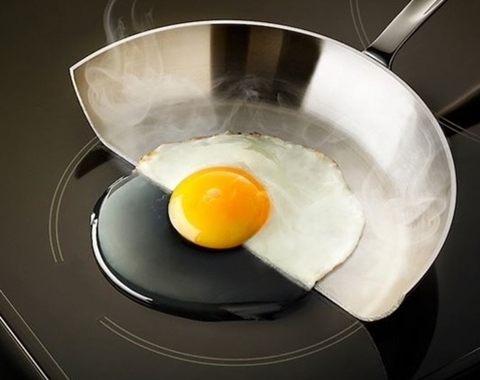
The science behind it is too complex and can be ignored for everyday purposes; after all, we all use electricity without really understanding how it works. Suffice it to say that induction cooking relies on magnetic fields and that it is quite unlike electricity or gas-powered cooking.
Induction cooking requires two elements: an induction plate and an induction pot. If you put a non-induction pot on an induction plate, nothing will happen. However, if you put an induction pot on the same plate, the pot soon becomes too hot to touch. Even more amazingly, you can move the induction pot a little, break a raw egg next to it, and watch as nothing happens to the egg. The induction pot will continue to heat up.
Does that mean that you should rush to Bob Shop and get your own induction plate and induction pot? But before you do, make an informed decision by considering all the pros and cons!
The pros of induction cooking
Induction cooking is energy efficient and uses less electricity than conventional electricity-powered cooking.
The induction element has heating performance comparable to a gas burner, but is significantly more energy-efficient.
Induction cooking releases less heat into the kitchen.
Induction pots heat up quickly and the heat is distributed evenly.
The plates are easy to clean. Induction cookers are easy to clean because the cooking surface is flat and smooth and does not get hot enough to make spilled food burn and stick.
Induction plates have programmable temperature and power buttons, allowing you to adjust the temperature almost exactly, within about one degree Celsius. Because induction burners deliver the precise, consistent, low heat demanded by certain sauces and confections, higher end restaurants often have a burner or two at the ready.

Induction plates are compact sizes, slim, and come in a variety of ranges, usually from one to five burners.
Induction plates can be portable, which means that you can simply place them on a countertop.
The surface of an induction plate cools immediately when you shut it off or remove the induction pot, which makes them very safe.
The cons of induction cooking
You will need to buy both the induction plate and a new set of induction pans and pots.
Induction plates (or hobs, or cookers, or units) and induction cookware are often more expensive than their conventional counterparts.
There is definitely a learning curve! You need to learn to control heat levels. You also need to rethink your cooking method. No more chopping the last of the onion while the oil heats up, because the heat comes on really fast. Also, no more leaving the pot to simmer for five or so minutes after the power is turned off, because the unit will shut down immediately (much like a gas burner).
Induction cookers are not always silent. They can produce a bit of humming or buzzing.
Now that you have all the information at your fingertips, you are probably ready to make the switch. Find all you need for induction cooking on Bob Shop!
But before you go, read the tip below. It could make the transition more cost-effective!
The tip to save you money
If you already have some pots and pans that you think will work with an induction unit, conduct a simple test. Put a fridge magnet at the bottom of a pot. If the magnet clings strongly, the pot is good to go on an induction unit. If the magnet falls off or clings very weakly, that pot will not work on an induction cooker. Also make sure that the bottom of your magnet-attracting pot is perfectly flat.